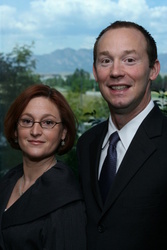Boulder, CO (PRWEB) June 06, 2013
A University of Colorado Boulder professor is leading a key NASA airborne science campaign this summer time that will probe climate patterns and air pollution over a vast expanse of North America that have prospective worldwide climate consequences.

The campaign, recognized as the Research of Emissions, Atmospheric Composition, Clouds and Climate Coupling by Regional Surveys, or SEAC4RS, will allow researchers to look at the atmosphere from leading to bottom at a crucial time of year when sturdy weather systems pump chemical substances from regional air pollution higher into the atmosphere, mentioned CU-Boulder Professor Brian Toon, the project science leader. The team will use a suite of scientific instruments aboard 3 aircraft: a NASA DC-8 airliner converted into a flying laboratory, the agencys high-altitude ER-2 — a contemporary version of the Air Force U2-S reconnaissance aircraft — and a Spec Inc. Lear Jet from Boulder equipped with sophisticated sensors to measure the properties of clouds.

The multimillion-dollar project will involve a lot more than 250 scientists, engineers, students and flight personnel from 5 diverse NASA centers, the National Center for Atmospheric Analysis in Boulder, the National Oceanic and Atmospheric Administration and 15 universities, like CU-Boulder, Harvard University, the California Institute of Technologies and the University of Innsbruck. The investigation flights in the SEAC4Rs campaign are slated to begin in August and run by way of the end of September.

There are a number of mission goals, mentioned Toon, a professor in CU-Boulders atmospheric and oceanic sciences department. The group desires to recognize how air pollution and other substances like water, for instance, are carried from Earths surface to the stratosphere, because they can impact climate and the ozone layer. Whilst such vertical transport occurs everyday in the course of random thunderstorms, it also occurs in organized systems like hurricanes and the North American Monsoon, which covers a massive region of the American Southwest as nicely as Mexico, Central America and northern South America each and every summer season, bringing rain to arid lands, he mentioned.

A second aim is to chart how emissions from plants and domestic animals are interacting with air pollution, said Toon, who also is affiliated with CUs Laboratory for Atmospheric and Space Physics. In the southeast United States, there are large atmospheric emissions from plants and folks that affect air high quality, he said. When the air from these two sources is mixed, uncommon chemistry can take place, potentially impacting human well being. Satellites show a massive modify in these emissions between August and September, which we would like to know much more about.

The team also is interested in greater understanding how smoke impacts climate and will study intense North American forest fires hurling enormous plumes of smoke into the atmosphere that can drift across the Atlantic Ocean to Europe. By altering cloud properties and by absorbing sunlight, smoke can have a important impact on the climate, he stated.

In addition, the SEAC4RS air campaign will be used to measure the accuracy of NASA satellites, create new methods for gathering atmospheric data and to find out a lot more about the planet from space. Numerous NASA Earth-observing satellites are involved in the project, including CloudSat, CALYPSO and GOES.

The SEAC4Rs campaign will be based at Ellington Field in Houston, which is operated by NASAs Johnson Space Center, and at NASAs Dryden Investigation Center in Edwards, Calif.

LASPs Sebastian Schmidt and Peter Pilewskie — Pilewskie also is a professor in CU-Boulders atmospheric and oceanic sciences department — will be studying radiation from the sky and how it is impacted by aerosols like smoke, air pollution and clouds. LASPs Lynn Harvey will aid with flight organizing and forecasting, while two of Toons students, Chris Maloney and Pengfei Yu, also will support with flight arranging.

This is a wonderful chance for graduate students, stated Toon. Not only do they get involved in a big field plan, they also get to meet the scientists from the United States and other nations involved in the project. These varieties of campaigns are a great opportunity for our students to become component of the wider scientific neighborhood and to demonstrate their personal abilities.

Some of the NOAA researchers involved in SEAC4RS are affiliated with the Cooperative Institute for Study in Environmental Sciences, a joint venture of CU and NOAA. CIRES scientist Jose Jimenez, also a professor in CU-Boulders chemistry and biochemistry department, will be studying air pollution particulates, which includes soot unleashed by forest fires. A number of CU-Boulder graduate students from CIRES also are involved in the campaign.

Toon was one particular of two mission scientists for a $ 12 million NASA campaign in 2007 operating out of Costa Rica and involving 600 scientists, students and assistance employees to measure how tropical storms influence international warming and stratospheric ozone depletion. In 2011, the American Geophysical Union awarded Toon the Revelle Medal for his groundbreaking perform on the effects of aerosols and clouds and climate.

The SEAC4Rs campaign is sponsored by the Earth Science Division in the Science Mission Directorate at NASA Headquarters in Washington, D.C., with assistance from the National Science Foundation and the Naval Research Laboratory.





Discover More Administrator Press Releases



